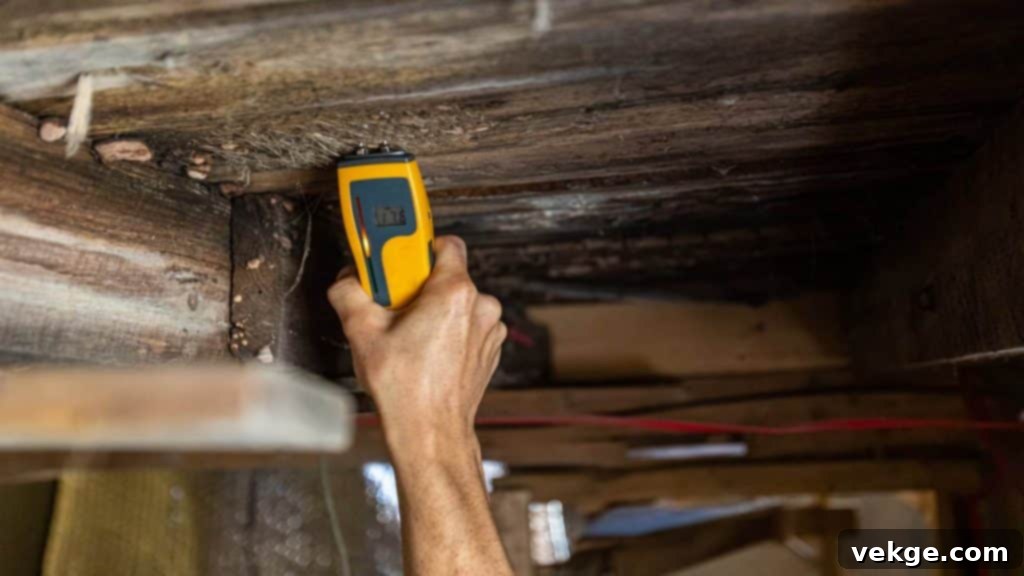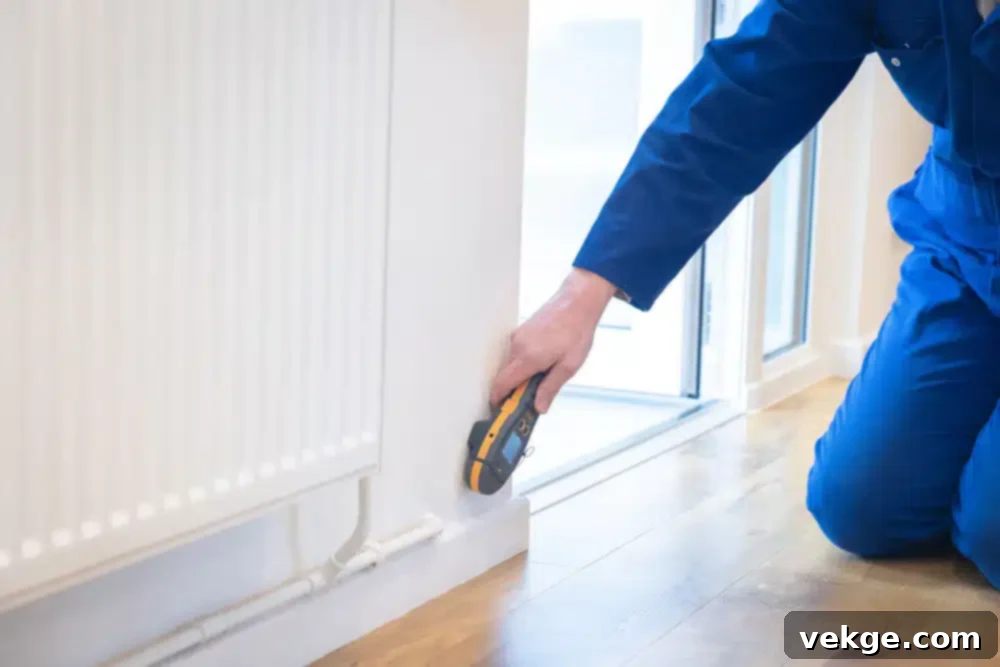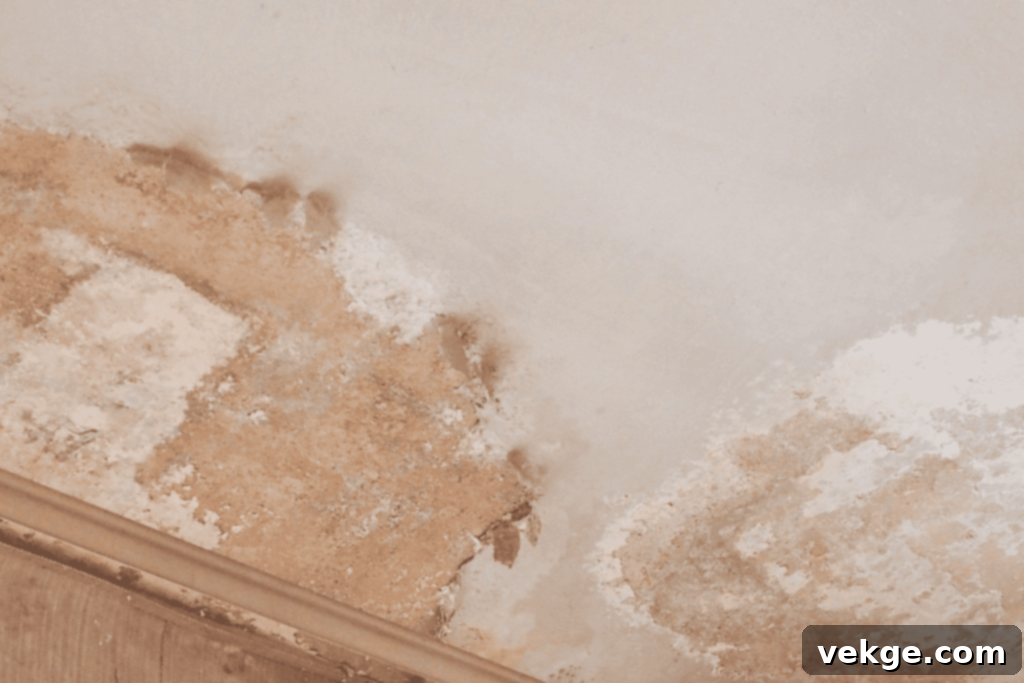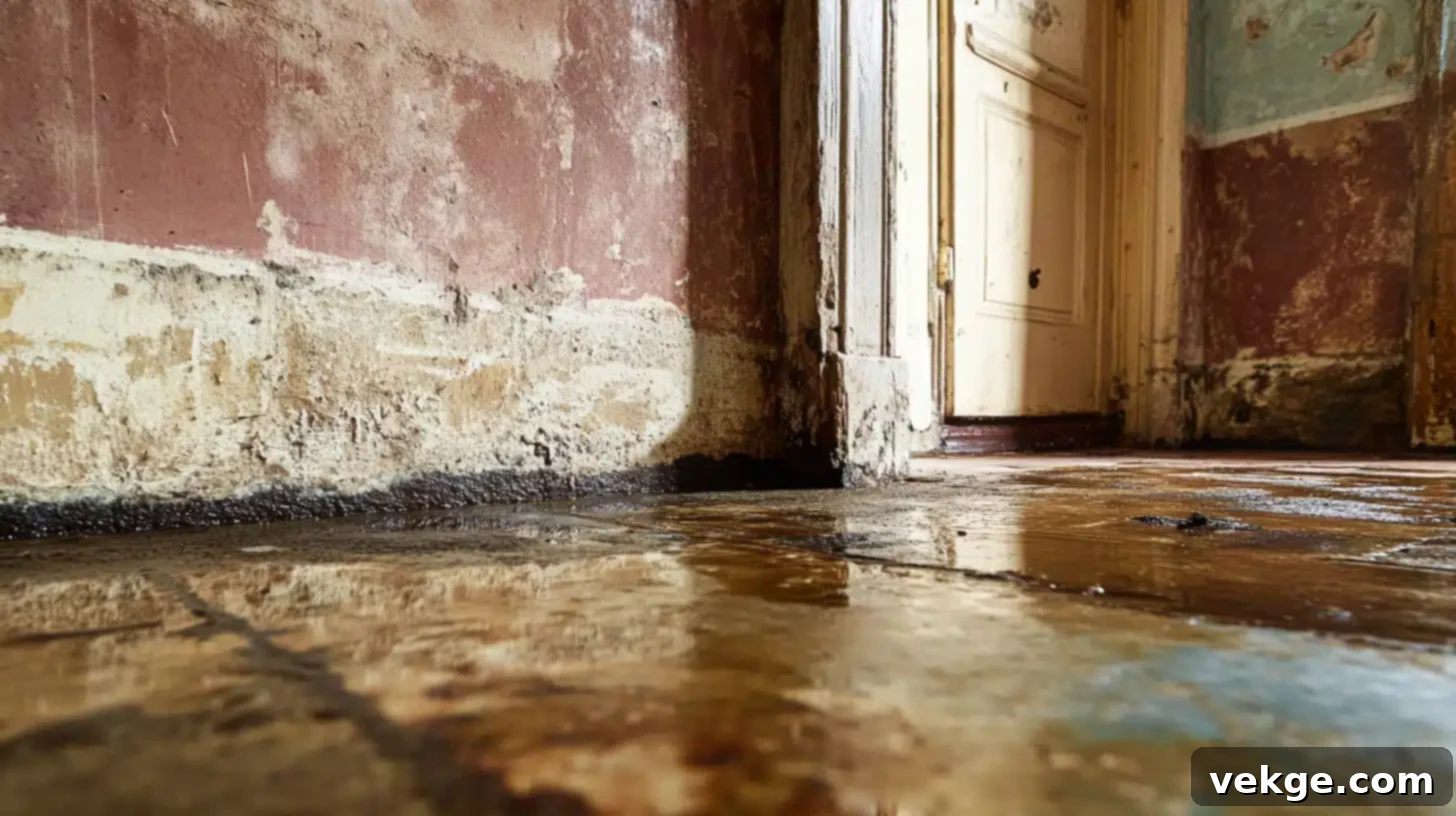Comprehensive Guide to Damp Surveys: Protecting Your Property from Moisture Damage
Understanding and addressing damp issues in properties is paramount for both homeowners and prospective buyers. Damp, if left untreated, can lead to significant structural damage, unhealthy living environments, and a decrease in property value. This makes a professional damp survey an indispensable tool for accurately diagnosing and effectively resolving these pervasive problems.
This comprehensive article will explore the multifaceted world of damp surveys, detailing their purpose, what they entail, their immense importance, and how they serve as a critical first step in mitigating and treating all forms of damp-related concerns. We aim to provide a clear, concise, and thorough understanding to empower property owners in making informed decisions.
What Exactly Is a Damp Survey and Why Is It Essential for Your Property?

Unveiling the Core Purpose of a Professional Damp Survey
A damp survey is a highly specialized property assessment focused solely on identifying, quantifying, and diagnosing moisture-related problems within a building. Unlike a general property survey, it delves deep into the specific indicators of damp, distinguishing between various types and pinpointing their root causes. This intricate process is conducted by a qualified damp surveyor – an expert equipped with specialized knowledge and tools to meticulously inspect and interpret signs of moisture. Their primary objective is to evaluate the full extent of any existing damp issues, provide a precise diagnosis, and then offer actionable, effective recommendations for damp treatment and prevention. Given that damp is a widespread issue that can escalate into severe structural compromise and health hazards if ignored, understanding the critical purpose of such a survey is the first step towards property preservation and peace of mind.
Optimal Times to Request a Thorough Damp Survey
Knowing when to call for a damp survey can be crucial in preventing minor issues from becoming major problems. Several circumstances warrant the expertise of a professional damp surveyor. Firstly, if you observe any tell-tale signs of moisture intrusion in your current home, such as bubbling or peeling paint, distinct musty odours, crumbling plaster, dark patches on walls, or visible mould growth (especially in corners or behind furniture), it is an unequivocal signal to seek professional help. These indicators suggest an active damp problem that requires immediate attention.
Secondly, for anyone in the process of purchasing a new property, a pre-purchase damp survey is an invaluable investment. Even if a general homebuyer’s survey mentions damp, a dedicated damp survey provides a more in-depth analysis, uncovering hidden issues that might not be immediately obvious or easily detected during a standard viewing. This can protect you from unforeseen future repair costs and provide leverage in price negotiations. Furthermore, if a property is located in an area with known high humidity or a history of dampness, a proactive damp survey, even without visible signs, can ensure long-term structural integrity and a healthy living environment.
Key Indicators: Recognizing Common Signs of Damp in Your Property
Early recognition of damp signs is fundamental for property owners to mitigate potential damage. The most common and easily identifiable indicators include discoloured patches on walls, often yellow, brown, or dark grey, and noticeable damp or cold spots to the touch. The presence of flaky or bubbling paint, peeling wallpaper, and crumbling plaster are strong visual cues. Furthermore, a persistent musty or earthy smell, particularly noticeable in confined spaces, often points to hidden damp and mould growth. Visible mould, which can appear as black, green, or white fuzzy patches, especially in poorly ventilated areas like bathrooms, kitchens, and around windows, is another clear sign.
Beyond visual and olfactory cues, a professional damp surveyor utilizes a damp meter to detect elevated moisture readings within walls, floors, and other structural elements, providing quantitative evidence of moisture levels that exceed normal limits. These combined signs are often the initial alarm bells for homeowners, indicating that a damp problem is actively developing and requires a professional damp survey to prevent it from worsening over time and causing more extensive damage.
Deconstructing the Process: What Does a Damp Survey Truly Involve?

The Essential Steps Comprising a Detailed Damp Survey
A thorough damp survey is a systematic process involving several critical steps designed for a comprehensive assessment of moisture presence in a property. The initial phase is a meticulous visual inspection conducted by the qualified damp surveyor. During this stage, the surveyor will systematically examine both the interior and exterior of the property, scrutinizing walls, floors, ceilings, and any accessible sub-floor areas or lofts for visual indicators of damp. They will actively look for signs of water ingress, such as cracks in external walls, defective guttering, compromised roofing, or poor ventilation that could be contributing to moisture issues.
Following the visual assessment, the surveyor employs specialized equipment, primarily damp meters, to take precise moisture readings in various materials throughout the property. This helps to quantify the moisture levels and delineate the affected areas. A comprehensive analysis of all findings – both visual observations and instrument readings – is then compiled into a detailed written damp report. This crucial document outlines the specific type of damp identified (e.g., rising damp, penetrating damp, condensation), its probable cause, and comprehensive recommendations for effective remediation and future prevention strategies.
Tools of the Trade: What a Damp Surveyor Uses
To accurately diagnose and assess damp issues, a qualified damp surveyor relies on a suite of specialized tools, each serving a unique diagnostic purpose. The most fundamental and commonly used instrument is the **damp meter**. These devices measure the electrical conductivity or resistance in building materials, providing an indication of moisture content. Non-invasive damp meters can detect surface moisture without damaging walls, while invasive pin meters provide more precise readings by penetrating the material slightly. These meters are essential for identifying areas with elevated damp readings that might not be visible to the naked eye.
Beyond damp meters, surveyors often utilize **infrared cameras (thermal imaging cameras)**. These devices detect temperature differences on surfaces, allowing the surveyor to visualize cooler areas that could indicate hidden moisture behind plasterwork or within cavities, even before any visible signs of damp appear. **Hygrometers** are used to measure the relative humidity and air temperature within rooms, which is crucial for identifying condensation problems. In some complex cases, **borescopes** or endoscopes might be used to inspect hard-to-reach areas, such as wall cavities or under floorboards, without causing extensive damage. The judicious application of these tools ensures a precise and accurate diagnosis of damp conditions within the property.
The Power of the Damp Report in Issue Identification
The damp report generated after a survey is far more than just a summary; it is a critical, legally recognized document that provides a comprehensive roadmap for addressing moisture problems. It offers a detailed description of the type of damp identified – be it rising damp, penetrating damp, or issues stemming from condensation – clarifying the specific mechanism of moisture ingress. The report goes beyond mere identification, providing in-depth explanations of the causes of the damp, which is vital for targeting effective solutions rather than merely treating symptoms. For example, it will distinguish between rising damp caused by a failed damp proof course and penetrating damp due to a faulty gutter or roof.
Crucially, the report includes a prioritized list of recommendations for damp proofing work or other remedial damp treatment options. These recommendations are tailored to the specific issues found and might include actions like installing a new damp proof course, repairing external masonry, improving ventilation, or implementing specific heating strategies. This detailed analysis serves as an invaluable resource for homeowners, potential buyers, and contractors alike, guiding them in making informed decisions regarding necessary repairs, maintenance, and future prevention strategies, ultimately safeguarding the property’s integrity and the occupants’ health.
Demystifying the Costs: How Much Does a Damp Survey Cost?
Influential Factors Determining the Cost of a Damp Survey
The cost of a damp survey can fluctuate significantly, influenced by a variety of factors. Property size is a primary determinant; larger homes or those with multiple levels typically require more extensive inspection time and resources, thus incurring higher fees. The complexity and suspected severity of the damp issues also play a role; if the property exhibits widespread damp or unusual symptoms that necessitate deeper investigation, the cost may increase. Location is another important factor, with survey costs often varying between urban and rural areas, or different regions, reflecting local market rates and surveyor availability.
Additional considerations include the age of the property (older buildings can present more complex damp challenges), ease of access to all areas (e.g., sub-floor voids, lofts), and the specific expertise of the surveyor (highly experienced or accredited surveyors might charge a premium). It’s also worth noting whether the survey is a standalone damp report or part of a broader building survey, as this can affect pricing. Homeowners should consider these variables when requesting quotes to budget accurately for a thorough damp assessment.
Is a Damp Survey a Worthwhile Investment? Analyzing the Value
Investing in a professional damp survey is almost always a highly worthwhile decision, offering substantial long-term benefits that far outweigh the initial outlay. The primary advantage is the prevention of far more costly repairs in the future. By accurately diagnosing and addressing damp problems early, property owners can avoid extensive structural damage, timber rot, and the degradation of finishes that would necessitate expensive remedial work if left untreated. For prospective property buyers, a damp survey is an essential due diligence step. It can uncover hidden issues that might significantly impact the property’s value, livability, and even its insurability, providing crucial information that can influence purchasing decisions or allow for price renegotiation.
Beyond financial considerations, a damp survey contributes significantly to health and safety. Damp conditions are a breeding ground for mould, which can trigger respiratory problems, allergies, and other health issues for occupants. By identifying and resolving damp, you create a healthier living environment. The peace of mind that comes from knowing your property is free from underlying moisture issues, or having a clear plan to address them, makes the cost of a damp survey a prudent and often essential investment in protecting your property and your well-being.
Financial Comparison: Damp Survey Versus Damp Treatment Costs
When evaluating the financial implications of managing damp in a property, it’s crucial to understand the cost-benefit relationship between conducting a damp survey and embarking on subsequent damp treatment. A damp survey incurs an upfront cost, but this expenditure provides invaluable diagnostic information. It precisely identifies the type of damp, its cause, and the most effective treatment solutions, preventing misdiagnosis and the implementation of costly, inappropriate repairs.
Conversely, neglecting to conduct a professional damp survey can lead to significantly higher expenses. Without a proper diagnosis, attempts to fix damp problems often address only the symptoms, leading to recurring issues and wasted money. More critically, untreated damp can rapidly escalate, causing severe structural damage, extensive timber decay, plaster degradation, and widespread mould growth, all of which demand far more extensive, complex, and expensive remediation work. The cost of a professional damp proof course installation, re-plastering, timber treatment, or even structural repairs for a severe damp issue can easily run into thousands, or even tens of thousands, of pounds. Therefore, the relatively modest investment in a damp survey is a proactive measure that saves substantial costs in the long run by ensuring targeted, effective, and lasting solutions, ultimately protecting your property’s integrity and value.
Delving Deeper: What Types of Damp Can a Damp Survey Accurately Identify?

Distinguishing Key Damp Types: Rising Damp, Penetrating Damp, and Condensation
One of the primary and most crucial functions of a damp survey is the accurate differentiation between the various forms of damp that can affect a property. Each type has distinct characteristics, causes, and requires specific treatment strategies. A qualified damp surveyor is adept at identifying these differences:
- Rising Damp: This occurs when moisture from the ground travels upwards through porous building materials, such as bricks and mortar, by capillary action. It is typically confined to the lower sections of walls, usually up to 1-1.5 meters from the ground. Common indicators include a tide mark on the wallpaper or paint, salt deposits, and decaying skirting boards or plaster. Rising damp is often caused by a faulty, bridged, or completely absent damp proof course (DPC). Treatment usually involves installing or repairing a DPC.
- Penetrating Damp: Also known as lateral damp, this results from external water ingress directly through walls or roofs. It is caused by structural defects that allow rainwater to penetrate the building envelope. Common culprits include cracked or porous masonry, faulty guttering, defective downpipes, broken roof tiles, leaking window or door frames, and damaged pointing. Signs of penetrating damp can appear at any height on walls or ceilings, often manifesting as localized damp patches that worsen after rainfall.
- Condensation Damp: This is arguably the most common type of damp and occurs when warm, moist air comes into contact with colder surfaces, causing water vapour to turn back into liquid water. It’s prevalent in areas with high humidity production (kitchens, bathrooms, utility rooms) and poor ventilation. Condensation often leads to mould growth, particularly on colder surfaces like external walls, around windows, and in corners. It can also cause musty smells, peeling wallpaper, and deterioration of window sills. Identifying condensation requires assessing ventilation, heating patterns, and occupancy habits.
A professional surveyor will meticulously investigate to pinpoint the specific type of damp, ensuring that appropriate and effective solutions, such as the installation of a damp proof course for rising damp or repairs to external elements for penetrating damp, or improved ventilation for condensation, are recommended.
The Intricate Relationship Between Mould Growth and Different Damp Types
Mould is a prevalent and often concerning consequence of all types of damp issues. Wherever damp conditions persist, a conducive environment for mould growth is created. This fungal growth thrives on moisture and organic materials found in building structures, presenting significant health risks to occupants, particularly those with respiratory conditions, allergies, or weakened immune systems. Mould can manifest in various colours – black, green, white, or even pink – and often carries a distinct musty odour.
A professional damp survey will not only assess the extent and type of mould growth but, more importantly, establish its direct relationship to the underlying damp problem. For instance, mould caused by rising damp might be accompanied by efflorescent salts, while mould from penetrating damp could be localized to areas of external water ingress. Mould from condensation will typically be more widespread, often in poorly ventilated areas. The surveyor will provide comprehensive recommendations that address both the root cause of the damp – eradicating the moisture source – and the remediation of the mould, ensuring the property is restored to a safe, healthy, and hygienic state for all occupants. Simply removing mould without addressing the underlying damp will only lead to its recurrence.
Precisely Identifying the Root Cause of Your Damp Issues
One of the most critical and complex aspects of a damp survey is not just identifying the presence of damp, but accurately pinpointing its underlying cause. Without this crucial diagnostic step, any remedial work risks being ineffective, leading to recurring problems and wasted resources. A skilled damp surveyor will employ a systematic approach, considering a multitude of factors to determine the root cause, which could range from subtle structural defects to inadequate ventilation, or significant external water ingress.
The surveyor will carefully analyze the property’s construction materials, age, geographical location, and surrounding environment (e.g., ground levels, tree growth, proximity to water bodies). They will investigate the condition of external elements like roofing, gutters, downpipes, rendering, and pointing for any vulnerabilities. Internally, they will assess heating and ventilation systems, as well as occupant habits, especially when condensation is suspected. This thorough analysis allows for targeted, precise interventions that directly address the specific causes of the damp problem, rather than merely treating the symptoms. This proactive approach is essential for preventing future damp issues from arising and ensuring the long-term health and stability of the property.
Navigating Your Damp Report: What to Expect and How to Act
Decoding the Information Contained Within a Comprehensive Damp Report
A well-prepared damp report is a crucial document, serving as a detailed record of the damp survey’s findings. It provides comprehensive information designed to give property owners a clear understanding of their damp issues. Typically, the report will precisely outline the specific type(s) of damp identified, whether it’s rising damp, penetrating damp, or condensation, along with a clear explanation of its probable cause. It will detail any visible signs of damp observed during the inspection, supplemented by precise moisture readings obtained from the damp meter, often indicating the severity and spread of the problem.
Furthermore, the report often includes illustrative photographs and explanatory diagrams to support the findings, making complex issues easier for property owners to comprehend. Crucially, it provides a prioritized list of recommendations for damp proofing work and necessary repairs, offering a clear, actionable plan for addressing the identified damp problems. This may include suggestions for specific treatments, structural repairs, or improvements to ventilation and heating. The report also often includes advice on preventative measures to safeguard against future damp issues.
Effective Interpretation of Your Damp Report’s Findings
Interpreting the findings of a damp report effectively is vital for property owners to make informed decisions. Start by carefully reviewing the executive summary, which typically highlights the most critical findings. Then, delve into the detailed sections, paying close attention to the specific types of damp identified, their causes, and the severity of the issues reported. It’s crucial to understand the implications of each finding – for instance, a failed damp proof course requires different action than a leaky gutter. Understanding the recommended actions is equally important, as this will dictate the necessary next steps and potential costs.
Do not hesitate to contact the qualified damp surveyor for clarification if any part of the report is unclear or if you have further questions regarding the findings or recommendations. They can provide additional context, explain technical terms, and help you understand the urgency and prioritization of the suggested remedial works. A proper understanding ensures that the correct actions are taken, leading to effective and lasting resolution of the damp problems.
Strategic Next Steps After Receiving Your Detailed Damp Report
Once you have received and thoroughly understood your damp report, the next critical phase involves taking prompt action based on the surveyor’s recommendations. This typically includes:
- Obtain Quotes: Seek quotes from reputable contractors specializing in damp proofing and remedial works. Ensure these contractors fully understand the recommendations outlined in your damp report.
- Schedule Remedial Treatment: Arrange for the necessary damp treatment, which could involve installing a new damp proof course, repairing external masonry, addressing plumbing leaks, improving ventilation systems, or other specific interventions identified in the report.
- Implement Preventative Measures: Follow any advice on preventative measures, such as improving internal ventilation, ensuring proper heating, clearing gutters regularly, or addressing external ground levels to prevent future moisture ingress.
- Monitor Your Property: After treatment, it is advisable to regularly monitor the affected areas for any signs of recurring damp. Keep an eye out for visual changes, musty smells, or mould growth, especially during seasonal changes or periods of heavy rainfall.
- Follow-up if Necessary: If new issues arise or if the remedial work does not seem to be fully effective, do not hesitate to seek further professional assistance. Timely intervention can prevent the problem from escalating again.
By taking swift and informed action based on the comprehensive damp report, property owners can effectively mitigate existing damp problems, protect their investment, and ensure a healthy, dry living environment for years to come.
